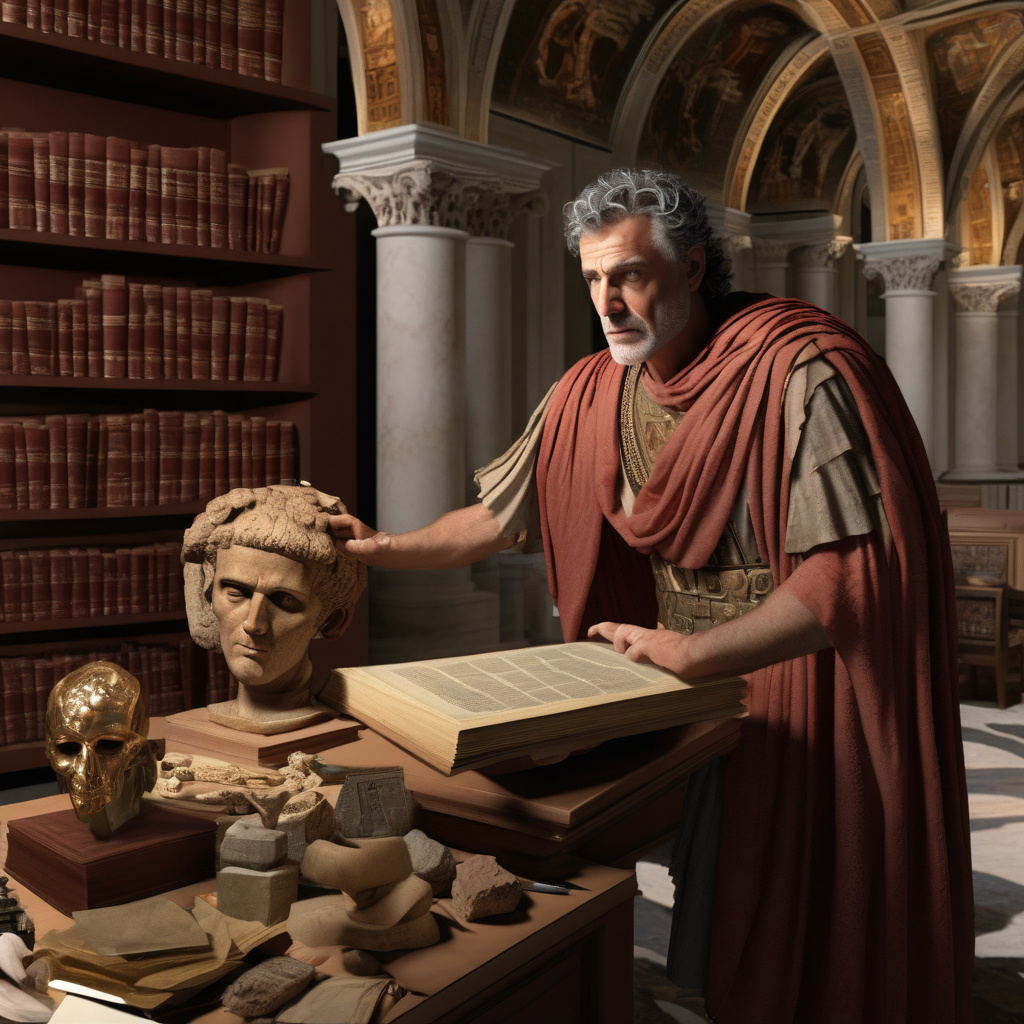Unlocking Ancient Secrets: AI Model Aeneas Revolutionizes Interpretation of Roman Inscriptions
In the realm of historical research, the deciphering of ancient inscriptions has long been a painstaking and time-consuming task. However, with the advent of cutting-edge technology, specifically the new AI model named Aeneas, this process is undergoing a transformation. Trained on a vast dataset of over 170,000 texts, Aeneas is proving to be an invaluable tool in shedding light on the daily life and customs of the ancient Roman world.
Roman inscriptions, whether carved on stone or inscribed on other materials, serve as primary sources of information about the people, events, and society of ancient Rome. These inscriptions can provide crucial insights into various aspects of Roman life, including social structure, religious practices, familial relationships, and economic activities. Nevertheless, due to factors such as degradation, linguistic changes, and the sheer volume of available inscriptions, interpreting them accurately has posed a challenge to historians and archaeologists.
This is where Aeneas steps in as a game-changer. By leveraging its sophisticated algorithms and deep learning capabilities, Aeneas can analyze and interpret Roman inscriptions with a level of speed and accuracy that surpasses traditional methods. The AI model’s training on a diverse range of texts has equipped it to recognize patterns, decipher obscure symbols, and even translate archaic language variants, thus enabling researchers to extract meaningful information from inscriptions more efficiently.
One of the key advantages of Aeneas is its ability to contextualize the inscriptions within the broader historical and cultural landscape of ancient Rome. By cross-referencing the content of the inscriptions with known historical events, geographical data, and archaeological findings, Aeneas can provide researchers with a more nuanced understanding of the social contexts in which the inscriptions were created. This contextualization is crucial for piecing together the puzzle of Roman society and reconstructing aspects of daily life that may have otherwise remained obscure.
Moreover, Aeneas excels in identifying connections and correlations across different inscriptions, thereby enabling historians to trace patterns of behavior, trade routes, migration movements, and other dynamic processes that shaped Roman civilization. Through its data-driven analysis, Aeneas can help researchers formulate hypotheses, test theories, and generate new insights into the multifaceted nature of Roman culture.
The impact of Aeneas extends beyond academic research, as its findings have the potential to enrich public understanding and appreciation of ancient history. By making the interpretation of Roman inscriptions more accessible and engaging, Aeneas opens up avenues for museums, educational institutions, and digital platforms to present historical information in innovative and interactive ways. Through virtual exhibitions, educational programs, and online resources, Aeneas can bring the world of ancient Rome to life for a global audience.
As we look to the future, the integration of AI models like Aeneas into historical research signals a paradigm shift in the way we explore and interpret the past. By harnessing the power of technology to unravel the mysteries of ancient inscriptions, we are not only preserving cultural heritage but also expanding our knowledge of human civilization. With Aeneas leading the way, the journey of discovery into the ancient Roman world promises to be both enlightening and transformative.
In conclusion, the emergence of the AI model Aeneas marks a significant milestone in the field of historical research, particularly in the interpretation of Roman inscriptions. Trained on a vast corpus of texts, Aeneas is enhancing our understanding of ancient Rome’s daily life and societal dynamics, offering new perspectives and insights that enrich our appreciation of the past. As we embrace this era of technological innovation, Aeneas stands as a testament to the potential of AI to unlock ancient secrets and connect us with our historical roots.
AI, Aeneas, Roman history, historical research, inscriptions
